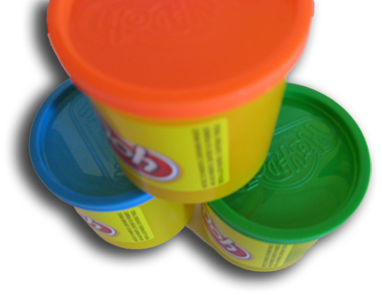
The Organization and Components of an APA-style Manuscript
Now that you have configured your word processor, you are ready to begin creating a structure for you masterpiece.
APA-style manuscripts require the following sections in this order (see pp. 228-236; see example paper on pp.40-59):
- Title page
- Abstract (optional for college papers)
- Text with headings
- References
- Additional Information (Appendix, Author Note, Tables, Figures)
Title Page
|
Refer to p.23 for the title, author, and institutional affiliation that are center aligned on the page.
For example: Attachment Theory and Adult Religiosity Literature Review Amanda J. Rockinson-Szapkiw Regent University
|
|
The running head for publication is an abbreviation of your title that will be used as a running head [page header] for the published article. The running head is typed on the same line as the page header, flush left, in UPPERCASE, following the words "Running head:". The running head should not exceed 50 characters, including punctuation, spacing, and the 14 characters of "Running head." In large manuscripts (or dissertations) the running head appears on every page.
For example: (mouse over the words) Running head: ATTACHMENT THEORY
|
|
The page header and page number are also included on the title page and every page of the manuscript. The page header is the first two or three words of the title in the upper right-hand corner . . . five spaces to the left of the page number. It is located one half of an inch from the top of the page, aligned right. Note: There are 5 spaces between the words and the page number. Always ask your instructors if they have a preference for the words you use for the header, as some prefer that you use your name. Put your cursor to the left of the first letter of the first word (or your name), type your running head, and then insert enough tabs for the running head alone to align left.
For example: Running head: ATTACHMENT THEORY [tab] [tab] [tab] [tab] [tab] tab] [tab] [tab] [tab] [tab] tab] [tab] [tab] [tab] [tab] [tab] [tab] Your Name 1 |
Abstract
|
The abstract is a brief summary of the paper that is 120 words or less. On the abstract page, the word "Abstract" is centered at the top of the page. The text of the abstract is double spaced and left aligned. Some short college papers may not merit an abstract. Always ask your instructor if you should include an abstract (2.04 pp. 25-27).
For example: Abstract Two contrasting hypothesis have been proposed about the relationship between parent-child attachment and adult religiosity. Evidence for both hypotheses has been found. The compensation hypothesis proposes that God may serve as a substitute attachment figure for individuals who experienced insecure attachment patterns (Kirkpatrick, 1998; Kirkpatrick & Shaver, 1990). The correspondence hypothesis proposes that God is attached to in a similar fashion as an individual attaches to their caregiver (Brokaw & Edward, 1994; Hall, Brokaw, Edwards, & Pike, 1998). Literature supporting each of these hypotheses is reviewed. Methodology concerns and implications for further research are discussed. |
Text With Headings
|
The text should begin on a new page. Do not give an introduction heading. On the first page of text, the title of the paper is centered at the top of the page. Then, the text and headers are typed, double spaced in the preferred font of Times New Roman in 12 point size. All text is left aligned, and paragraph indentions are five spaces. Remember that there is only one space after each of the periods.
The section headers guide your reader and provide an outline for your manuscript. For short articles and most of your college papers, only one to two levels of headings are needed (3.02, 3.03, pp. 62-63). |
References
|
Citations in the text of the manuscript are enclosed in parentheses and include the author's last name(s), publication year.
For example:
(Kirkpatrick, 1998)
|
|
The in-text citations are listed in the reference section. The reference section follows the text of your manuscript. The word "References" is centered at the top of the page. Citations are alphabetized, double spaced, and hanging indent formatted. Do not manually with enters or tabs align your references. Use the ruler bar and the word processor to set the indents for second and subsequent lines of each reference. You may need to check View > Ruler
For example: References
Kirkpatrick, L. A. (1998). God as a substitute attachment figure: A longitudinal study of adult attachment style and religious change in college students. Personality and Social Psychology Bulletin, 24, 961-973.
|
Additional Information
Some manuscripts also include additional material such as tables, figures, and appendices. These are located after the reference page.
Check Your Understanding Activity
Before you go on, test your knowledge about the components and organization of an APA –style manuscript.
Now you understand the primary components and structure of an APA style manuscript, you are well on your way to creating a successful writing masterpiece. There are, however, a few more items that you need to consider before you begin writing.





